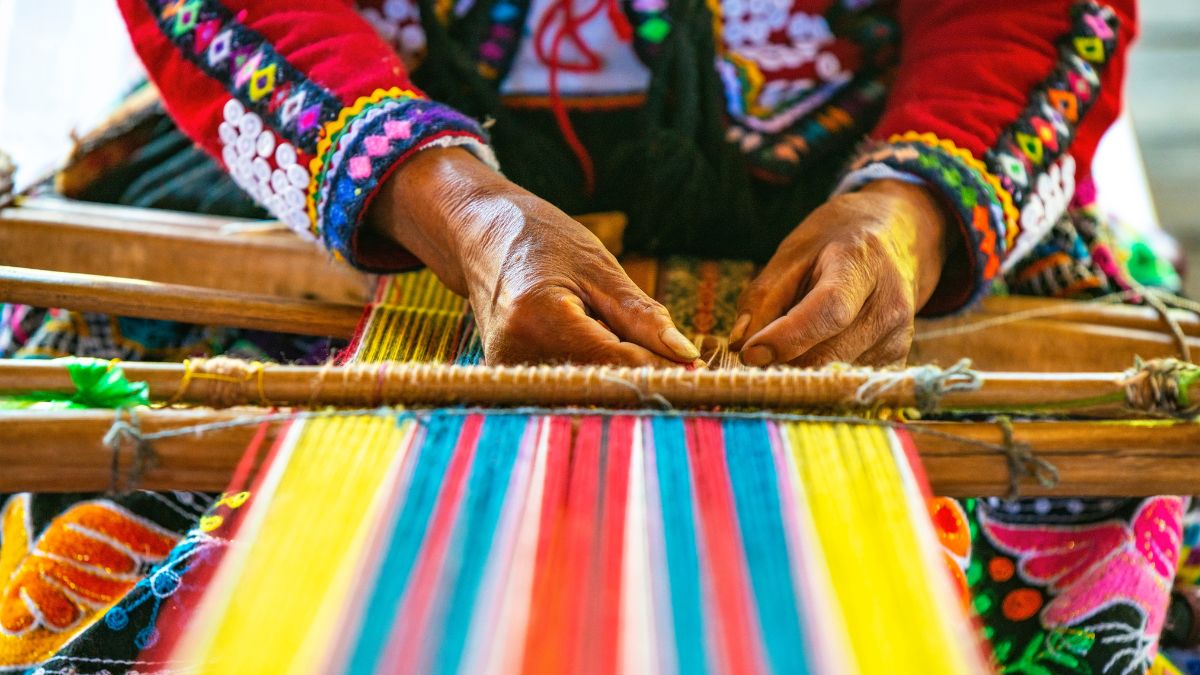- By Bornika Das
- Sat, 19 Apr 2025 03:04 PM (IST)
- Source:JND
Handloom Cotton Sarees: In the world of Indian tradition, handloom cotton sarees have secured a special place for themselves for their exquisite craftsmanship and timeless elegance. Handloom cotton sarees embody the rich cultural heritage of the Indian weavers and are prioritised by women. Moreover, these saree fabrics are not only enjoyed by Indians but are also exported to foreign countries to be worn by the NRIs as well as foreigners. This has led to an increased demand for these beautiful drapes and the saree market is being flooded with machine-made imitations mimicking the charm of the handloom without the authenticity. For saree lovers who don’t want to get duped with fake handloom fabrics, here are five ways to spot authentic handloom cotton sarees that will not only help preserve the tradition but also support the livelihoods of the weavers.
What Are Handloom Fabrics?
Handloom fabrics are handwoven fabrics that are created on a weaving device called the loom. The process involves entwining a set of vertical threads, the ‘warp”, with a set of horizontal threads, the ‘weft”. Weaving handloom fabrics requires the utmost patience, artistry and technical skills and of course, physical labour. Handlooms were usually used by nomads in Central Asia as early as 5000 BC. The widespread use of handloom fabrics began around 3000 BC after the invention of cotton.

Weaving Handloom Fabric (Image Credits: Canva)
Tips To Identify Authentic Handloom Cotton Sarees
Check For Weaving
Real handloom cotton sarees have some imperfect weaving. Machine-made sarees usually have a uniform and flawless finish, but the real ones come with slight irregularity. These minor imperfections are not defects, but they reflect the authenticity and efforts of the weavers. Thus, if you see a slight irregularity in the fabric of the saree, know that it is a real handloom cotton saree.
Look For Handloom Mark
Traditional Indian handloom sarees will always have the Indian government’s handloom mark. It is a certificate of authenticity for pure handloom products and assures you that you’re buying a genuine handloom saree. If you don’t see the label or a tag, ask the seller for the certificate for confirmation that you’re buying a real handloom cotton saree.
Transparency Test
Check the transparency of the saree by holding it up to the light and looking right through it. Handloom cotton sarees are transparent and known for their lightweight nature. Machine-made handloom sarees or fake handloom cotton sarees have tight weaves, which will make them less opaque.

Authentic Handloom Cotton Saree (Image Credits: Canva)
Compare The Price
As they are man-made and require a lot of effort and time to create, handloom cotton sarees are usually more expensive than the fake or machine-made handloom sarees. If you come across a cheap handloom saree, know that it is a counterfeit.
Feel The Fabric
Handloom sarees are known for their breezy and soft fabric, thus, a pure one feels rough. Machine-made handloom sarees, on the other hand, will have an unnatural glossy and silky finish, owing to the use of synthetic threads.
ALSO READ: Georgette vs Organza: How To Choose The Right Fabric For Your Outfit?
ALSO READ: Raw Silk vs Art Silk: Know The Difference Between These Two Fabrics Before Buying

